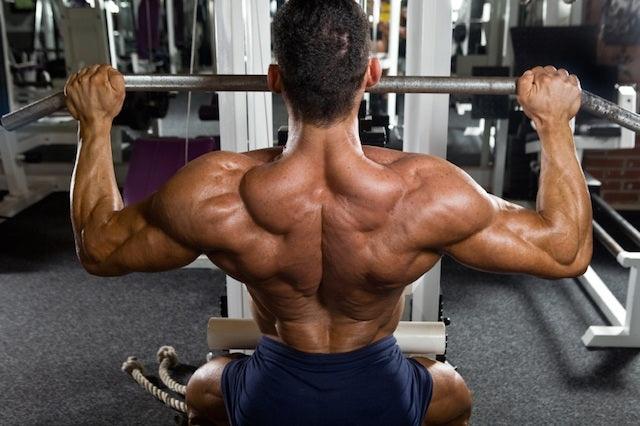

Best Grip for Maximal Lat Activation
Table of Contents
If you walk into most gym, when you see people performing the lat pull-down, most people favor the wide bar lat-pulldown bar. Its a popular belief that the wide grip lat pull-down is the superior exercise for activating the lats compared to a narrow grip lat pulldown. Researchers had subjects perform lat-pulldowns using 3 different pronated or overhand grip widths. Fifteen men performed 6RM in the lat pull-down with:
- narrow grip lat pull-down,
- medium grip lat pull-down,
- and wide grip grip lat pull-down
Researchers placed electrodes all over the subjects back and arms to measure the muscle activation of the back and arms. At the end of the study, the subjects were able to use more weight for the narrow and medium grip than for the wide grip. There was similar EMG (i.e. muscle activation) activation between grip widths for latissimus, trapezius, or infraspinatus, but a tendency for biceps brachii activation to be greater for medium vs. narrow, when the entire movement was analyzed.
Collectively, a medium grip may have some minor advantages over small and wide grips; however, athletes and others engaged in resistance training can generally expect similar muscle activation which in turn should result in similar hypertrophy gains with a grip width that is consistent with a medium grip pull-down. There was really not a big difference in the muscle activation between the three exercises, but the medium grip had a slightly greater activation of the lats, but just for variety, one may want to consider incorporating all three into your routine.
Underhand Versus Overhand Grip
So now that you understand the hand width makes little difference in the activation of the lats, what about the hand grip being an underhand grip or an overhand grip. Two trials of 5 reps were analyzed for the following grips; wide grip-overhand, wide grip-underhand, narrow grip -overhand and narrow grip-underhand Researchers placed EMG electrodes parallel to the muscle fibers on the latissimus dorsi, biceps brachii and the middle trapezius.
The results showed that both wide and narrow overhand grips had greater muscular activity of the latissimus dorsi than either of the underhand grips. Results also showed that there was no significant difference in muscular activity between wide or narrow overhand grips and there was no difference in the biceps brachii or the middle trapezius between any of the grip variations. So if you looking for maximal lat activation, choose the overhand grip, whereas an underhand grip will activate more biceps.
Lastly, don’t perform lat pulldowns behind the neck, its dangerous for the shoulder. Pulling the bar down behind your head wreaks havoc on your shoulder joint. The shoulders are a relatively small muscle group which are not designed to lift the sort of loads the lats are capable of. The shoulders are a secondary muscle used during lat pulldowns, but the movement cannot be performed without them, consequently massive loads can be placed on the shoulders and rotator cuffs (stabalising muscles deep in the shoulder). By bringing the bar behind your neck you are opening the shoulder joint up slightly which exposes the muscle and tendons to becoming entrapped within the shoulder joint.

















